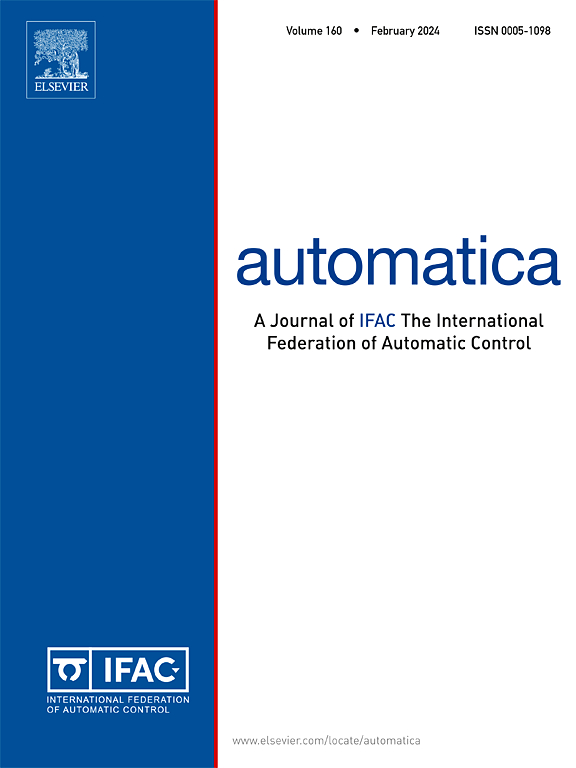集合对集合迭代学习控制
IF 5.9
2区 计算机科学
Q1 AUTOMATION & CONTROL SYSTEMS
引用次数: 0
摘要
对于一些迭代学习控制(ILC)应用,需要在特定时间获得集合或区域,而不是在这些时间跟踪特定的参考。在这些集合或区域中,没有提供用于跟踪的引用,因此必须对集合进行无引用跟踪,或者必须在集合中创建引用。虽然现有的区域到区域ILC方法在集合内创建了一个参考,但本文通过开发一种新的集到集(STS) ILC来扩展ILC文献,该方法对时间索引集进行无参考跟踪。对STS ILC的分析表明,通过以无参考的方式跟踪集合,STS ILC的优化成本将低于替代ILC方法的优化成本。此外,尽管存在未知的重复干扰,STS ILC更新律使输出轨迹在所有期望的时间内都位于集合内。使用两个案例研究来证明该方法的有效性,该方法允许线性系统代理通过学习从一次迭代到下一次迭代的正确路径来访问多边形集区域。本文章由计算机程序翻译,如有差异,请以英文原文为准。
Set-to-set iterative learning control
For some iterative learning control (ILC) applications, obtaining sets or regions at specific times is desired rather than tracking a specific reference at these times. Within these sets or regions, no reference is provided for tracking, so either reference-free tracking of the sets must be done or a reference must be created within the sets. While existing approaches such as region-to-region ILC create a reference within the sets, this paper extends the ILC literature by developing a novel set-to-set (STS) ILC which performs reference-free tracking of the time-indexed sets. Analysis of the STS ILC demonstrates that by tracking the sets in a reference-free manner, the optimization cost of the STS ILC will lower bound that of alternative ILC methods. Additionally, despite an unknown repetitive disturbance, the STS ILC update law causes the output trajectory to lie within the sets at all desired times. Two case studies are used to demonstrate the effectiveness of the approach in allowing a linear system agent to visit polytopic set regions by learning the correct paths from one iteration to the next.
求助全文
通过发布文献求助,成功后即可免费获取论文全文。
去求助
来源期刊

Automatica
工程技术-工程:电子与电气
CiteScore
10.70
自引率
7.80%
发文量
617
审稿时长
5 months
期刊介绍:
Automatica is a leading archival publication in the field of systems and control. The field encompasses today a broad set of areas and topics, and is thriving not only within itself but also in terms of its impact on other fields, such as communications, computers, biology, energy and economics. Since its inception in 1963, Automatica has kept abreast with the evolution of the field over the years, and has emerged as a leading publication driving the trends in the field.
After being founded in 1963, Automatica became a journal of the International Federation of Automatic Control (IFAC) in 1969. It features a characteristic blend of theoretical and applied papers of archival, lasting value, reporting cutting edge research results by authors across the globe. It features articles in distinct categories, including regular, brief and survey papers, technical communiqués, correspondence items, as well as reviews on published books of interest to the readership. It occasionally publishes special issues on emerging new topics or established mature topics of interest to a broad audience.
Automatica solicits original high-quality contributions in all the categories listed above, and in all areas of systems and control interpreted in a broad sense and evolving constantly. They may be submitted directly to a subject editor or to the Editor-in-Chief if not sure about the subject area. Editorial procedures in place assure careful, fair, and prompt handling of all submitted articles. Accepted papers appear in the journal in the shortest time feasible given production time constraints.
 求助内容:
求助内容: 应助结果提醒方式:
应助结果提醒方式:


